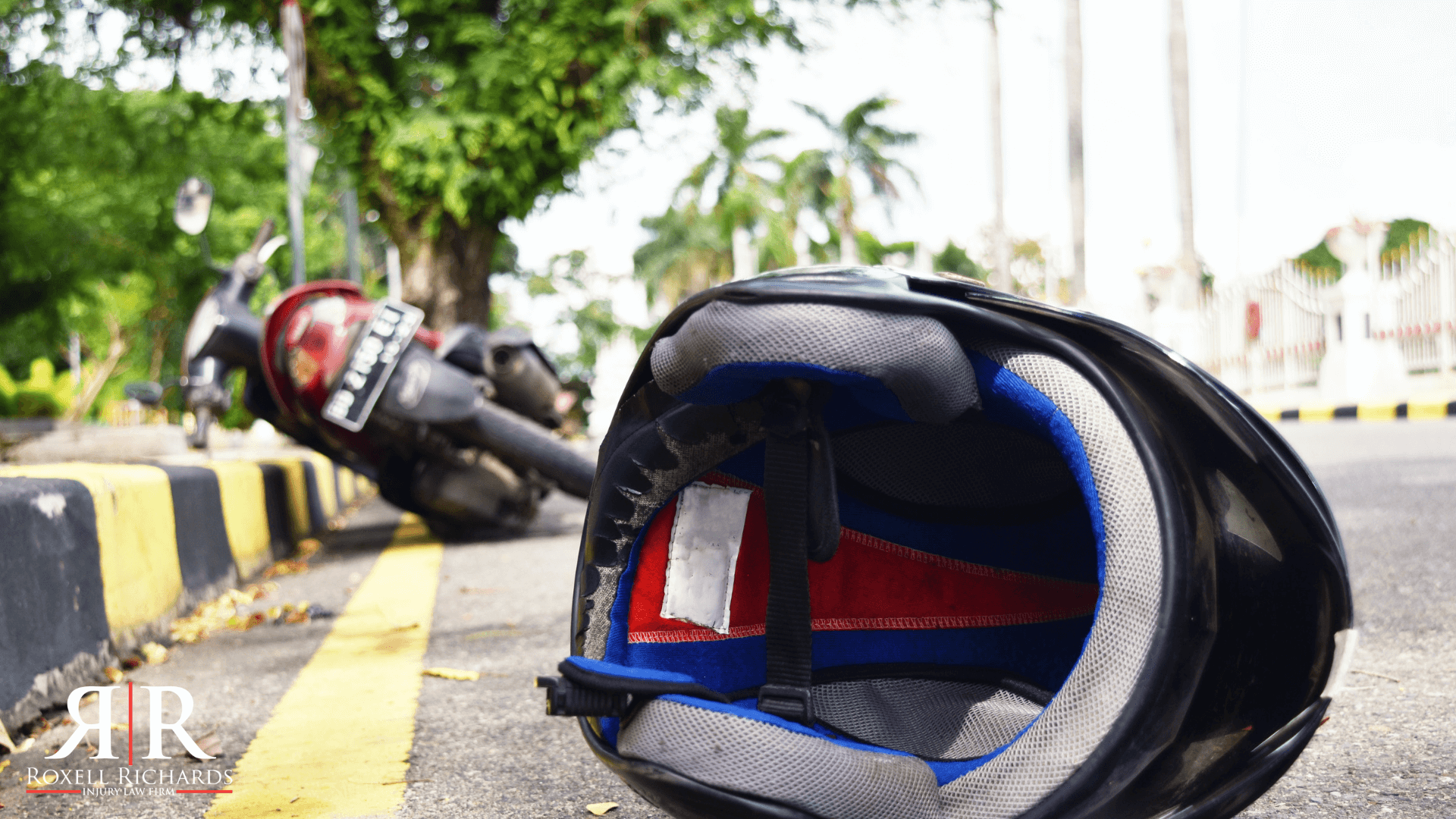Pro Tip To Win A Motorcycle Accident Personal Injury Claim
Understanding Personal Injury Claims
Understanding personal injury claims is crucial when involved in a minor Houston motorcycle accident due to someone else’s negligence.
It is a legal process where injured individuals seek compensation from the responsible party or their insurance company. Therefore using it to recover physically, emotionally, and financially from the accident’s impact.
What is a personal injury claim?
A personal injury claim is a civil lawsuit that an individual (the plaintiff) can file if suffering from harm or injuries due to someone else’s wrongful actions or negligence.
So, in a motorcycle accident, the plaintiff, who is typically the injured rider, seeks to hold the at-fault party accountable for the damages.
And this can include medical bills and expenses, lost wages, pain and suffering, property damage, and other losses due to the accident.
Pursuing a personal injury claim
To pursue a personal injury motorcycle accident claim after a motorcycle accident, there are specific steps you need to follow:
- Seek immediate medical attention after the accident to ensure your well-being and create a medical record linking your injuries to the accident.
- Document the accident by taking photographs, gathering information, and obtaining witness statements.
- Notify the police and your insurance company about the accident, But avoid giving statements with full details to insurers. Especially without consulting a personal injury attorney.
- Consult with a personal injury attorney with extensive experience in motorcycle accidents. Because they can guide you through the legal process, assess your claim’s strength, and represent your interests with insurance companies and in court.
Proofs in a personal injury claim
In a personal injury claim, the burden of proof rests with the plaintiff. To win the case, you must demonstrate the following elements:
- Duty of Care: Show that the at-fault party owes you a duty of care. In a motorcycle accident, all drivers must exercise reasonable care and caution.
- Breach of Duty: Prove that the at-fault party breached their duty of care by acting negligently or recklessly. For example, if the driver was distracted, speeding, or violating traffic rules.
- Causation: Establish a direct link between the at-fault party’s breach of duty and your injuries. You must show that the accident was the direct cause of your injuries.
- Damages: Provide evidence of the damages you are suffering from the accident. This may include medical records, bills, documentation of lost wages, and statements about the impact of the injuries on your daily life.
Causation in personal injury
An essential component of a personal injury claim is causation. It refers to the direct link between the at-fault party’s negligent actions and the injuries the plaintiff is suffering from. And in a motorcycle accident case, causation establishes that the injuries sustained were a direct result of the defendant’s breach of duty.
But proving causation requires presenting medical evidence, expert opinions, and other relevant documentation. And these requirements demonstrate how the accident directly led to the plaintiff’s injuries.
Also, it may involve analyzing the events leading up to the accident, the nature of the injuries sustained, and the medical treatment received.
Recovering from a Motorcycle Accident Injury
A motorcycle accident can lead to severe injuries, leaving victims physically and emotionally traumatized.
The road to recovery can be challenging, but with the right approach and support, it is possible to regain health and resume a fulfilling life.
- Seek immediate medical attention after a motorcycle accident to identify and treat minor injuries, as some problems may worsen.
- Follow your healthcare provider’s advice and treatment plan. And this includes attending appointments and engaging in physical therapy. As this will support your recovery and regain functionality.
- Be patient with yourself during the healing process, allowing enough rest and avoiding strenuous activities that could prolong recovery or worsen injuries.
- Seek emotional support from friends, family, or a counselor to address any trauma or anxiety from the accident.
- Adopt a healthy lifestyle, including a balanced diet, sufficient sleep, and avoiding habits that hinder healing. For example, smoking or excessive alcohol consumption.
- Communicate with your employer about your condition and expected return-to-work timeline if injuries prevent an immediate return.
- Consider consulting a personal injury attorney if the accident resulted from negligence. Because they can help pursue compensation for medical expenses, lost wages, and pain and suffering.
- Stay positive and focus on your recovery journey, celebrating progress and setting realistic goals for the future.
Odds and Factors in Personal Injury Cases
Motorcycling can be an exhilarating experience, but it also carries inherent risks. The odds of getting injured on a motorcycle depend on various factors, including:
- Rider Experience: Novice riders are more susceptible to accidents as they may lack the necessary skills and instincts to handle challenging situations.
- Traffic Conditions: Heavy traffic and road congestion increase the likelihood of accidents, as motorcyclists have less protection and maneuverability than other vehicles.
- Weather Conditions: Adverse weather conditions such as rain, snow, or ice can make road surfaces slippery and reduce visibility, increasing the chances of accidents.
- Speeding: Riding at excessive speeds reduces reaction times and control, making it more likely to be involved in an accident.
- Other Driver’s Behavior: Many motorcycle accidents are from the negligence of other drivers, such as failing to yield, distracted driving, or not checking blind spots.
- Protective Gear: Wearing proper protective gear can significantly reduce the severity of injuries in the event of an accident. And this includes helmets, gloves, jackets, and boots.
It’s essential for motorcyclists to be aware of these factors and practice defensive riding techniques to minimize the odds of getting injured.
Common factors that affect a personal injury case
- Negligence is a central factor in personal injury cases. And this is where the injured party must demonstrate the at-fault party’s breach of duty of care that led to the injuries.
- Quality documentation and evidence play a crucial role in determining the outcome of a personal injury case. And this includes medical records, accident reports, photographs, and witness statements,
- Pre-existing medical conditions can complicate a personal injury case, as the defendant’s legal team may argue that existing conditions exacerbated injuries.
- The defendant’s insurance coverage can impact the potential compensation for the injured party in a personal injury case.
- Comparative negligence principles in some states may reduce the plaintiff’s compensation according to their percentage of fault in the accident.
- Expert testimony from professional witnesses may provide valuable insights into liability, causation, and the extent of the plaintiff’s injuries in complex cases.
- Skillful negotiation by attorneys with extensive experience can significantly influence the outcome. Furthermore, this will protect the plaintiff’s rights in settlement negotiations.
- Filing a personal injury claim must be within the statute of limitations timeframe to preserve the right to seek compensation.
- The jury or judge’s decision in a trial can heavily influence the final verdict and the amount of compensation to award in personal injury cases.
Valuing an Injury and Compensation
When it comes to personal injury claims, determining the value of an injury is a complex process that involves various factors and considerations. And valuing an injury involves assessing the injury’s physical, emotional, and financial impact on the victim’s life.
The Valuing of An Injury
Valuing an injury requires considering both economic and non-economic damages. Economic damages are the tangible financial losses resulting from the injury. For example, medical expenses, lost wages, property damage, and rehabilitation costs.
On the other hand, non-economic damages are intangible losses that are more challenging to quantify. And this includes pain and suffering, emotional distress, loss of enjoyment of life, and mental anguish.
To determine the value of an injury, the following factors are typically taken into account:
- Medical Expenses: The total cost of medical treatment, including hospitalization, surgery, medication, physical therapy, and ongoing care.
- Lost Wages: Compensation for income lost due to the inability to work during recovery or any future earning capacity affected by the injury.
- Property Damage: Reimbursement for repairing or replacing any damaged property, such as a motorcycle.
- Pain and Suffering: Enduring physical pain and emotional distress due to the injury can vary according to the severity of the injury and its impact on daily life.
- Emotional Distress: Compensation for psychological trauma, anxiety, or depression from the accident and its aftermath.
- Loss of Consortium: Awarding damages to a spouse or family member for losing companionship and support due to the injury.
Compensation in personal injury claims
Compensation in personal injury claims is the financial award granted to the injured party to cover their losses and damages resulting from the accident.
It is designed to help victims recover physically, emotionally, and financially from the impact of the injury. Compensation aims to make the injured party “whole” again, to the extent possible, as if the accident never occurred.
Calculating Compensation
Calculating compensation involves adding up all the economic and non-economic damages. Economic damages, such as medical expenses and lost wages, are relatively straightforward to quantify as they have specific monetary values.
However, non-economic damages, like pain and suffering, are subjective and more challenging to quantify.
Insurance adjusters and courts often use various methods to calculate compensation, such as:
- Multiplier Method: This method involves multiplying the economic damages by a certain factor (multiplier) to determine the value of non-economic damages. The multiplier is typically based on the severity of the injuries and the impact on the victim’s life.
- Per Diem Method: In this approach, a daily rate (per diem) is established for non-economic damages, and the total amount is calculated according to the number of days the Victim is anticipated to experience pain from the wounds.
- Computer Programs: Some insurance companies use computer programs considering various factors to calculate compensation automatically.
General damages in personal injury
General damages refer to non-economic damages that are not easily quantifiable. They encompass various intangible losses suffered by the victim due to the injury. Some common examples of general damages include:
- Pain and Suffering: Compensation for the victim’s experiences of physical pain and emotional distress.
- Emotional Distress: Awarding damages for psychological suffering, anxiety, or trauma from the accident.
- Loss of Enjoyment of Life: Compensation for reduced quality of life or inability to participate in previously enjoyed activities.
- Loss of Consortium: Awarding damages to a spouse for the loss of companionship and support resulting from the injury.
The jury or insurance adjuster often determines the value of general damages. And these are according to the presentation of evidence and the impact of the injury on the victim’s life.
Legal Aspects of Personal Injury Claims
The time it takes for a personal injury claim to be paid can vary significantly according to several factors.
Simple cases with clear liability and minimal damages may be resolved relatively quickly, while complex cases involving severe injuries and disputed liability may take much longer. Generally, the summary of the timeline for a claim to be paid can be as follows:
- Investigation and Negotiation: After filing a claim, the insurance company will investigate to assess liability and the extent of damages.
- Settlement Negotiations: The insurance company may offer a settlement once the investigation is complete. Negotiations between the parties can take weeks to months, depending on how quickly they reach an agreement.
- Litigation: If unable to reach a fair settlement through negotiations, the case may proceed to litigation and go to court. This can extend the timeline significantly, often taking several months to years to resolve.
- Receiving Payment: Upon reaching a settlement or obtaining a court verdict, the payment may take a few weeks before distribution to the injured party.
The timeframe for filing a lawsuit
The statute of limitations sets a strict deadline for filing a lawsuit after an incident.
Depending on the state and accident circumstances, the time limit usually ranges from one to six years for personal injury claims, including motorcycle accidents.
Consult a personal injury lawyer in Houston promptly after the accident to know the applicable statute of limitations and protect your right to seek compensation.
Two examples of claims of value
Claims of value refer to personal injury cases where the compensation sought is subjective and not easily quantifiable. Two examples of claims of value are:
Pain and Suffering
A claim on pain and suffering seeks maximum compensation for the physical pain and emotional distress from the accident and resulting injuries.
As pain and suffering are subjective, determining their value can be challenging. In such cases, the jury or insurance adjuster considers factors like the severity of injuries, duration of pain, and impact on the victim’s life.
Loss of Enjoyment of Life
This claim seeks to compensate the injured party for losing enjoyment in activities they once enjoyed due to accident-related injuries.
The claim’s value depends on how much the injuries affect the victim’s quality of life and ability to participate in momentous activities.
Role of a Lawyer in Winning a Motorcycle Accident Personal Injury Claim
A Houston motorcycle accident lawyer with years of experience has in-depth knowledge of motorcycle wreck accidents and injury claims. Furthermore, they can provide an initial free consultation, navigating the legal complexities to protect your rights.
A skillful Houston personal injury lawyer conducts a thorough investigation, gathers evidence, and uses expert testimony. To establish liability, accurately value your injuries and negotiate for fair compensation.
If necessary, they provide trial representation, ensuring peace of mind while advocating for your best interests during legal battles.
In conclusion, understanding personal injury claims is crucial when seeking compensation after a motorcycle crash accident.
Knowing the elements, criteria, and importance of causation will help you build a strong case for winning your claim together with case results.
Consulting a Houston motorcycle accident attorney with extensive experience protects your rights and increases your chances of receiving fair compensation for your losses.





